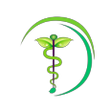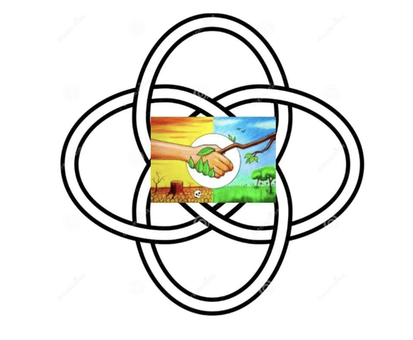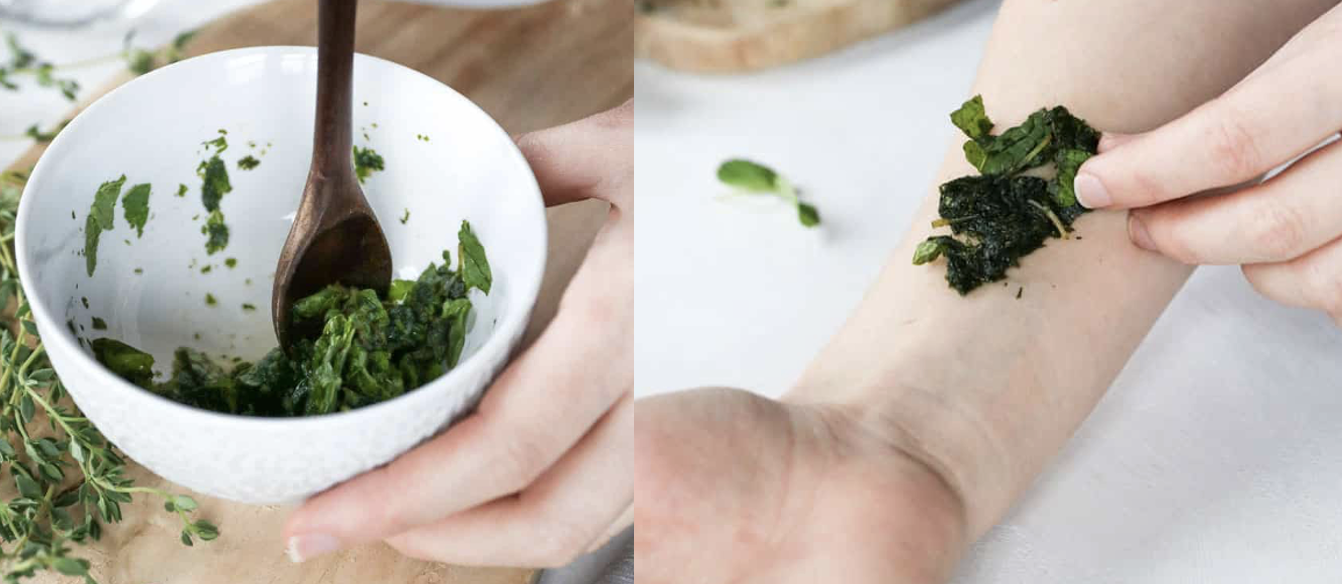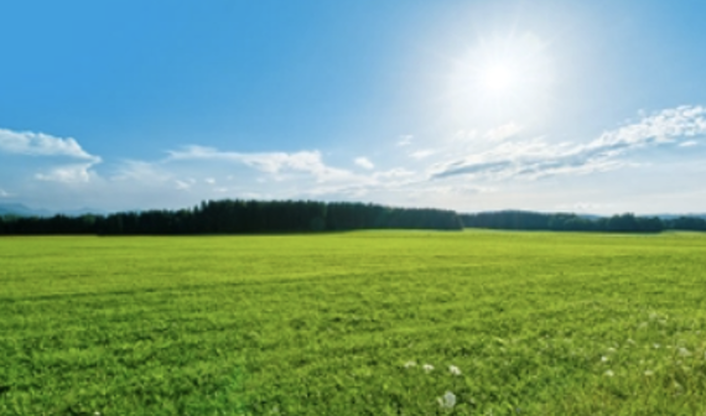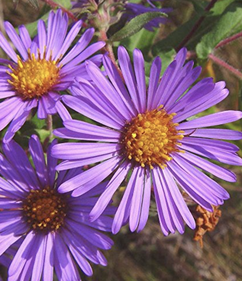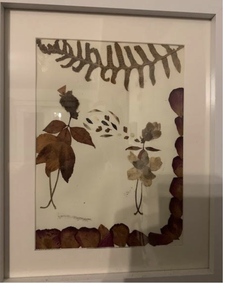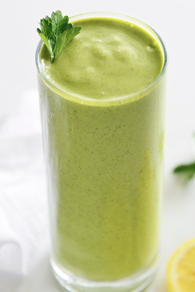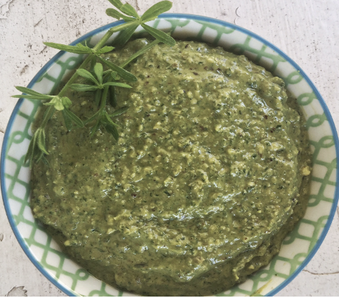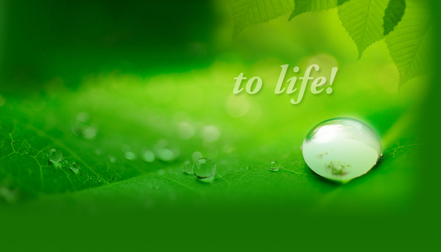
Self-care, Healthcreation & Foraging
The Self-care revolution ushers in a different kind of doctor-patient relationship
“The Self-Care Revolution is brilliant as it speaks to the ONLY solution for the health care crisis we are in. Take responsibility for your health!” Dr. Norm Shealy, MD
Self-care:
I trust that the content of this website will help to increase your understanding of the nature, complexity and meaning of health and dis-ease and motivate you to embark on your own journey back to balance and achieve vibrant health.
I offer workshops for patient groups diagnosed with diabetes or memory problems.
For more information follow these links.
- Diabetes
- Dementia, MCI, SMI
- Healing plant foraging as self-care.
Get in touch with me via the contact form and I will call you back.
If you want to find out how to treat common ailments using herbs and diet yourself, you can also find useful information including diet sheets by scrolling down and clicking on the green headings of workshops and foraging walks here
I trust that the content of this website will help to increase your understanding of the nature, complexity and meaning of health and dis-ease and motivate you to embark on your own journey back to balance and achieve vibrant health.
I offer workshops for patient groups diagnosed with diabetes or memory problems.
For more information follow these links.
- Diabetes
- Dementia, MCI, SMI
- Healing plant foraging as self-care.
Get in touch with me via the contact form and I will call you back.
If you want to find out how to treat common ailments using herbs and diet yourself, you can also find useful information including diet sheets by scrolling down and clicking on the green headings of workshops and foraging walks here
Foraging as a transformative selfcare practice
An invitation to a journey of co-production with nature
An invitation to a journey of co-production with nature
Nature has a profound impact on our well-being, and by inviting the wild into our life regularly, we can cultivate a deeper connection with the natural world and enhance our overall sense of balance and joy
Selfcare by learning to listen to our innate knowing and by working with nature in and around is not about making drastic changes but finding small, sustainable ways to integrate nature into our daily routine.
We are an integral part of nature.
Once we ignore that, we end up feeling disconnected and in trouble.
Foraging for wild food in nature can be an empowering and fun way to practise self-care in many different ways. Nature does not limit our creativity or imagination.
Experiencing the healing benefits of wild plants can help us shift from feeling a victim of disease or circumstances to feeling empowered and have agency. Nature is always available to support us on our healing journey if we choose to connect with it.
Simply paying close attention to our surroundings, the plants, and the process of gathering can also be a meditative and grounding experience.
By incorporating foraging into our self-care routine, we can create a deeper connection with nature and enjoy the many benefits it has to offer.
Some ideas for self-care through foraging:
Remember to respect the environment and wildlife, and follow local regulations and guidelines for foraging in your area.
It's essential to be cautious when foraging during the colder months, as some edible plants may become scarce, and others may be less appealing due to frost or cold weather. Additionally, always ensure proper identification of any wild plant you intend to forage and gather them from clean and uncontaminated areas.
Examples of wild plants that are relatively easy to forage in November and December
Rose Hips (Rosa spp.):
Rose hips are the fruit of wild roses and can often be found in hedgerows and along woodland edges. They are high in vitamin C and can be used to make tea, jams, or syrups.
Haws (Hawthorn Berries - Crataegus monogyna):
Hawthorn berries, known as haws, are commonly found in hedgerows and are usually available well into November. They can be used to make tea, tinctures, or jams.
Ground Ivy (Glechoma hederacea):
Ground ivy is a low-growing perennial herb that can often be found in sheltered areas, even during the colder months. It can be used to make tea or add flavour to soups.
Wild Garlic (Allium ursinum):
In some areas, wild garlic may continue to grow throughout the winter. Its leaves have a mild garlic flavour and can be used in various dishes.
Yarrow (Achillea millefolium):
Yarrow can sometimes be found during the early winter months. Its feathery leaves and aromatic flowers have various culinary and medicinal uses. Yarrow contains flavonoids that increase saliva and stomach acid to help improve digestion. Yarrow may also relax smooth muscle in the intestine and uterus, which can relieve stomach and menstrual cramps.
Nettle leaves (Urtica urens & dioica):
Use leaves of young nettles or bright green tops of larger plants when foraging in autumn or winter. The fresh growth from nettles that grow after being cut back is also fine. Wear gloves when collecting nettle leaves. Nettles stimulate the detoxifying action of the liver and support the cleansing action of the kidneys through their diuretic action. They also inhibit inflammation that can trigger seasonal allergies by blocking histamine receptors and stopping immune cells from releasing chemicals that trigger allergy symptoms.
Due to its high mineral content, including iron, nettles make for a good iron tonic.
Nettles are also useful in the treatment of arthritis, diabetes, urinary tract infections (UTIs), kidney stones, enlarged prostate and allergies like hay fever.
Cleavers (Galium aparine): also known a Sticky Willie
Mostly found in spring but fresh growth also appears in November.
Cleavers supports the lymphatic system in its cleansing and immune work. It used for treating swollen lymph glands, lymphatic congestion and swollen breasts, as well as for glandular fever, post-viral fatigue and tonsillitis. It has a reputation as a spring cleanser.
Dandelion leaves and roots:
Found all year round on waste land, meadows and as a weed in gardens.
The leaves are bitter and used to stimulate the appetite, help digestion and to reduce water retention by supporting kidney function. Dandelion flower has antioxidant properties. Dandelion root is used to detoxify the liver and gallbladder. The roasted roots are also used as a coffee substitute.
Dandelion isn't just your average weed – it's like nature's superhero for our health! With its all-around safety and the way it works its magic in various parts of our body, it's basically the ultimate wild healing plant.
Greater Plantain leaves:
Found all year round on the side of walls, pavements, in gardens and meadows. It has many medicinal uses including support of the respiratory system, of gut and liver, and it is very effective in reducing histamine.
Greater plantain leaves, also known as Plantago major, are versatile and can be used for various purposes. Here are a few things you can make or do with greater plantain leaves:
How to make a poultice from herbs like Plantain
Making a poultice at home is a simple and effective way to relieve various skin problems like insect bites, bee stings, and inflammation caused allergies.
What you need:
1. Estimate how much you will need based on the size of the area that needs to be covered (your best guess is fine).
2. After thoroughly washing them with fresh water, chop the herbs into small pieces and place them in a bowl. Using the back of a spoon or a mortar and pestle if you have one, crush the herbs into a pulp.
As you mash, the herbs will release their natural juices, but you may need to add a teaspoon of water to help the mixture come together into a paste-like consistency.
3. Spread the crushed herbs onto the injury. How much to apply is up to you, but just make sure that the area is evenly and completely covered.
4. Finally, wrap the area of skin with a layer of gauze or cheesecloth to hold the paste in place. Since cheesecloth is rather porous, you can use several layers to keep the herb mixture contained. You might even wish to finish up with a layer of plastic wrap to keep the liquid from rubbing off on clothes or bedding.
Remember to apply a small amount to a small area at first and check for any adverse reactions before applying it to a larger area.
Cover the poultice with a dry cloth and secure it with an adhesive bandage. Leave it on for about 20 minutes or a few hours, depending on the severity of the problem.
After removing the poultice, wash the affected area with clean water.
For more information: https://helloglow.co/how-to-make-herbal-poultice/
Selfcare by learning to listen to our innate knowing and by working with nature in and around is not about making drastic changes but finding small, sustainable ways to integrate nature into our daily routine.
We are an integral part of nature.
Once we ignore that, we end up feeling disconnected and in trouble.
Foraging for wild food in nature can be an empowering and fun way to practise self-care in many different ways. Nature does not limit our creativity or imagination.
Experiencing the healing benefits of wild plants can help us shift from feeling a victim of disease or circumstances to feeling empowered and have agency. Nature is always available to support us on our healing journey if we choose to connect with it.
Simply paying close attention to our surroundings, the plants, and the process of gathering can also be a meditative and grounding experience.
By incorporating foraging into our self-care routine, we can create a deeper connection with nature and enjoy the many benefits it has to offer.
Some ideas for self-care through foraging:
- Moving your body & breathing fresh air
- Enjoying the different colours of plants and how they blend into their environment
- Smelling different plants and noticing what emotions and body sensations the various smells, shapes, textures and colours evoke in you
- Learning which plants are safe to eat and let them tease your taste buds
- Getting creative by trying out recipes, making up recipes and sharing them with friends and family
- Connecting with fellow foragers in small groups and learn with and from each other
- Learning to identify and safely collect wild edibles like flowers, berries, roots, stems, leaves and seeds of wild plants. Just make sure you're confident in your identification skills and always follow ethical foraging practices.
- Gathering wild plants to create your own herbal teas, tinctures, oils or salves. This can be both a therapeutic as well as a creative process.
- Nature Journaling: Bring a notebook and document your foraging adventures through writing, sketches, or pressed plants. It's a great way to connect with nature and keep a record of your experiences.
- Connecting with Seasonality: Foraging can help you reconnect with the changing seasons and the natural rhythms of the Earth. It's a way to celebrate and appreciate the beauty of each season.
- Sunset or Sunrise Foraging: Experience the magic of sunrise or sunset while foraging. These times of day offer unique lighting and a sense of tranquillity. Spending those times outdoors also helps to set the body clock.
- Share the Experience: Foraging can be a communal activity. Invite friends or family to join you for a shared foraging adventure, and enjoy the experience together.
- Ethical Foraging: Ensure you practice ethical foraging by not over-harvesting, respecting local laws and regulations, and leaving no trace in the environment.
- Safety Precautions: Prioritise safety by being knowledgeable about the plants and materials you're foraging, as some can be toxic. Always follow safety guidelines.
- Seasonal Cooking: Use your foraged finds to prepare seasonal dishes. Cooking with ingredients you've gathered can be a deeply rewarding experience.
- Natural Crafts: Collecting materials like leaves, twigs, and stones to create nature-inspired crafts. This can be a fun and artistic way to express yourself.
Remember to respect the environment and wildlife, and follow local regulations and guidelines for foraging in your area.
It's essential to be cautious when foraging during the colder months, as some edible plants may become scarce, and others may be less appealing due to frost or cold weather. Additionally, always ensure proper identification of any wild plant you intend to forage and gather them from clean and uncontaminated areas.
Examples of wild plants that are relatively easy to forage in November and December
Rose Hips (Rosa spp.):
Rose hips are the fruit of wild roses and can often be found in hedgerows and along woodland edges. They are high in vitamin C and can be used to make tea, jams, or syrups.
Haws (Hawthorn Berries - Crataegus monogyna):
Hawthorn berries, known as haws, are commonly found in hedgerows and are usually available well into November. They can be used to make tea, tinctures, or jams.
Ground Ivy (Glechoma hederacea):
Ground ivy is a low-growing perennial herb that can often be found in sheltered areas, even during the colder months. It can be used to make tea or add flavour to soups.
Wild Garlic (Allium ursinum):
In some areas, wild garlic may continue to grow throughout the winter. Its leaves have a mild garlic flavour and can be used in various dishes.
Yarrow (Achillea millefolium):
Yarrow can sometimes be found during the early winter months. Its feathery leaves and aromatic flowers have various culinary and medicinal uses. Yarrow contains flavonoids that increase saliva and stomach acid to help improve digestion. Yarrow may also relax smooth muscle in the intestine and uterus, which can relieve stomach and menstrual cramps.
Nettle leaves (Urtica urens & dioica):
Use leaves of young nettles or bright green tops of larger plants when foraging in autumn or winter. The fresh growth from nettles that grow after being cut back is also fine. Wear gloves when collecting nettle leaves. Nettles stimulate the detoxifying action of the liver and support the cleansing action of the kidneys through their diuretic action. They also inhibit inflammation that can trigger seasonal allergies by blocking histamine receptors and stopping immune cells from releasing chemicals that trigger allergy symptoms.
Due to its high mineral content, including iron, nettles make for a good iron tonic.
Nettles are also useful in the treatment of arthritis, diabetes, urinary tract infections (UTIs), kidney stones, enlarged prostate and allergies like hay fever.
Cleavers (Galium aparine): also known a Sticky Willie
Mostly found in spring but fresh growth also appears in November.
Cleavers supports the lymphatic system in its cleansing and immune work. It used for treating swollen lymph glands, lymphatic congestion and swollen breasts, as well as for glandular fever, post-viral fatigue and tonsillitis. It has a reputation as a spring cleanser.
Dandelion leaves and roots:
Found all year round on waste land, meadows and as a weed in gardens.
The leaves are bitter and used to stimulate the appetite, help digestion and to reduce water retention by supporting kidney function. Dandelion flower has antioxidant properties. Dandelion root is used to detoxify the liver and gallbladder. The roasted roots are also used as a coffee substitute.
Dandelion isn't just your average weed – it's like nature's superhero for our health! With its all-around safety and the way it works its magic in various parts of our body, it's basically the ultimate wild healing plant.
Greater Plantain leaves:
Found all year round on the side of walls, pavements, in gardens and meadows. It has many medicinal uses including support of the respiratory system, of gut and liver, and it is very effective in reducing histamine.
Greater plantain leaves, also known as Plantago major, are versatile and can be used for various purposes. Here are a few things you can make or do with greater plantain leaves:
- Salves and Balms: Infuse the leaves in oil and create a soothing salve or balm. This can be applied topically to help with skin irritations, minor cuts, or insect bites.
- Tea: Harvest the leaves and make a herbal tea. Greater plantain tea has various health benefits, including anti-inflammatory properties.
- Edible Greens: While the leaves are a bit bitter, they can be added to salads or cooked as greens. Harvest the younger leaves for a milder flavour.
- Poultices: Crush the leaves to create a poultice, which can be applied directly to wounds, burns, or bruises to aid in healing and reduce inflammation.
- Infused Vinegar: Create an herbal vinegar by infusing the leaves in apple cider vinegar. This can be used as a dressing or taken as a health tonic.
- Tinctures: Make a tincture by soaking the leaves in alcohol ie Vodka.. This can be a concentrated form for medicinal purposes.
- Natural Bandage: The large, broad leaves can be used as a natural bandage for small wounds or blisters. Simply clean the leaves and apply them to the affected area.
How to make a poultice from herbs like Plantain
Making a poultice at home is a simple and effective way to relieve various skin problems like insect bites, bee stings, and inflammation caused allergies.
What you need:
- Fresh leaves
- Clean muslin or cheesecloth
- Knife and cutting board
- Bowl for mixing
- Spoon (or mortar and pestle)
- Water (optional)
1. Estimate how much you will need based on the size of the area that needs to be covered (your best guess is fine).
2. After thoroughly washing them with fresh water, chop the herbs into small pieces and place them in a bowl. Using the back of a spoon or a mortar and pestle if you have one, crush the herbs into a pulp.
As you mash, the herbs will release their natural juices, but you may need to add a teaspoon of water to help the mixture come together into a paste-like consistency.
3. Spread the crushed herbs onto the injury. How much to apply is up to you, but just make sure that the area is evenly and completely covered.
4. Finally, wrap the area of skin with a layer of gauze or cheesecloth to hold the paste in place. Since cheesecloth is rather porous, you can use several layers to keep the herb mixture contained. You might even wish to finish up with a layer of plastic wrap to keep the liquid from rubbing off on clothes or bedding.
Remember to apply a small amount to a small area at first and check for any adverse reactions before applying it to a larger area.
Cover the poultice with a dry cloth and secure it with an adhesive bandage. Leave it on for about 20 minutes or a few hours, depending on the severity of the problem.
After removing the poultice, wash the affected area with clean water.
For more information: https://helloglow.co/how-to-make-herbal-poultice/
Some ways you can incorporate wild plants into your self-care routine:
Be sure to properly identify any wild plants you plan to use for any purpose, especially when making edible or medicinal preparations. By integrating wild plants into your self-care routine, you can enhance your connection with nature and enjoy the numerous physical and mental health benefits they offer.
Herbal Teas:
Harvest and dry wild herbs like chamomile, nettle, mint, or lavender to make soothing herbal teas. Enjoy a cup of tea to relax and unwind.
Aromatherapy:
Collect aromatic wild plants like lavender, rosemary, or pine needles, and use them to create natural potpourri or sachets. The scents can promote relaxation and calm.
Wildflower Bouquets:
Pick a bouquet of wildflowers in your area and bring a touch of nature indoors. Arranging wildflowers can be a creative and aesthetically pleasing self-care activity.
Nature Walks and Meditation:
Take a mindful walk in the woods or a natural setting, paying attention to the sights, sounds, and smells of the environment. Practice meditation or deep breathing to reduce stress and anxiety.
Natural Skincare:
Explore the use of wild plants in homemade skincare products. For example, you can make a face mask from clay and wild herbs like calendula or chamomile.
Wild Plant Baths:
Create a relaxing bath by adding dried wild plants or flowers to your bathwater. Soaking in a wild plant-infused bath can soothe both the body and the mind.
Natural Medicine:
Learn about the medicinal properties of local wild plants and use them to make herbal remedies like salves, tinctures, or balms for minor ailments.
Wild Edible Recipes:
Incorporate foraged wild edibles into your meals to nourish your body and connect with nature. Try using ingredients like dandelion greens, dandelion root, nettles and wild berries in smoothies, salads and soups.
Plant Identification:
Spend time studying and identifying wild plants in your area. This can be a meditative and educational self-care activity that deepens your connection to the natural world.
Environmental Stewardship:
Participate in local conservation efforts, such as cleaning up a natural area or planting native wild plants to promote biodiversity and protect the environment.
Nature Art and Crafts:
Use natural materials like twigs, leaves, and rocks to create art and crafts. This hands-on, creative activity can be both relaxing and satisfying.
Remember: Always practise ethical foraging by respecting the environment, not overharvesting, and following local regulations and guidelines.
Be sure to properly identify any wild plants you plan to use for any purpose, especially when making edible or medicinal preparations. By integrating wild plants into your self-care routine, you can enhance your connection with nature and enjoy the numerous physical and mental health benefits they offer.
Herbal Teas:
Harvest and dry wild herbs like chamomile, nettle, mint, or lavender to make soothing herbal teas. Enjoy a cup of tea to relax and unwind.
Aromatherapy:
Collect aromatic wild plants like lavender, rosemary, or pine needles, and use them to create natural potpourri or sachets. The scents can promote relaxation and calm.
Wildflower Bouquets:
Pick a bouquet of wildflowers in your area and bring a touch of nature indoors. Arranging wildflowers can be a creative and aesthetically pleasing self-care activity.
Nature Walks and Meditation:
Take a mindful walk in the woods or a natural setting, paying attention to the sights, sounds, and smells of the environment. Practice meditation or deep breathing to reduce stress and anxiety.
Natural Skincare:
Explore the use of wild plants in homemade skincare products. For example, you can make a face mask from clay and wild herbs like calendula or chamomile.
Wild Plant Baths:
Create a relaxing bath by adding dried wild plants or flowers to your bathwater. Soaking in a wild plant-infused bath can soothe both the body and the mind.
Natural Medicine:
Learn about the medicinal properties of local wild plants and use them to make herbal remedies like salves, tinctures, or balms for minor ailments.
Wild Edible Recipes:
Incorporate foraged wild edibles into your meals to nourish your body and connect with nature. Try using ingredients like dandelion greens, dandelion root, nettles and wild berries in smoothies, salads and soups.
Plant Identification:
Spend time studying and identifying wild plants in your area. This can be a meditative and educational self-care activity that deepens your connection to the natural world.
Environmental Stewardship:
Participate in local conservation efforts, such as cleaning up a natural area or planting native wild plants to promote biodiversity and protect the environment.
Nature Art and Crafts:
Use natural materials like twigs, leaves, and rocks to create art and crafts. This hands-on, creative activity can be both relaxing and satisfying.
Remember: Always practise ethical foraging by respecting the environment, not overharvesting, and following local regulations and guidelines.
Embracing the wild elements of nature can significantly enhance your daily self-care routine
Some simple yet effective ways to incorporate something wild into each day:
Morning Nature Meditation:
Start your day with a short meditation in a natural setting. Focus on the sounds, smells, and sensations around you. It's a great way to centre yourself before the day begins.
Wild Breakfast:
Include wild ingredients in your breakfast. Add berries, nuts, or edible flowers to your cereal, yogurt, or smoothie for a nutritious and wild touch.
Desk Greenery:
Bring a small potted plant or a bouquet of wildflowers to your workspace. Having a touch of nature in your immediate surroundings can improve mood and productivity.
Nature Breaks:
Take short breaks throughout the day to step outside and breathe in fresh air. Even a few minutes in nature can rejuvenate your mind and reduce stress.
Wild Tea Time:
Replace your regular tea or coffee with a wild herbal tea. Use foraged herbs like mint, chamomile, or lemon balm for a calming and flavourful beverage.
Afternoon Foraging:
If possible, spend a few minutes foraging for wild edibles during the afternoon. It could be as simple as collecting edible leaves, flowers, or berries.
Nature Journaling:
Keep a nature journal and document something wild you observe each day. Sketching, writing, or even taking photographs can be a creative and reflective practice.
Wild Workout:
Take your exercise routine outdoors. Whether it's a jog in the park, yoga in the garden, or a hike in the woods, incorporating movement into nature can boost your well-being.
Evening Sunset Ritual:
Wind down your day by watching the sunset in a natural setting. Reflect on the day and appreciate the beauty of the changing sky.
Starry Nights:
Spend a few minutes stargazing before bedtime. Connecting with the night sky can be a tranquil and awe-inspiring way to end the day.
Wild Dreamscape:
Before sleeping, visualize a wild and peaceful natural setting. It could be a forest, beach, or meadow. This mental imagery can promote relaxation and better sleep.
Some simple yet effective ways to incorporate something wild into each day:
Morning Nature Meditation:
Start your day with a short meditation in a natural setting. Focus on the sounds, smells, and sensations around you. It's a great way to centre yourself before the day begins.
Wild Breakfast:
Include wild ingredients in your breakfast. Add berries, nuts, or edible flowers to your cereal, yogurt, or smoothie for a nutritious and wild touch.
Desk Greenery:
Bring a small potted plant or a bouquet of wildflowers to your workspace. Having a touch of nature in your immediate surroundings can improve mood and productivity.
Nature Breaks:
Take short breaks throughout the day to step outside and breathe in fresh air. Even a few minutes in nature can rejuvenate your mind and reduce stress.
Wild Tea Time:
Replace your regular tea or coffee with a wild herbal tea. Use foraged herbs like mint, chamomile, or lemon balm for a calming and flavourful beverage.
Afternoon Foraging:
If possible, spend a few minutes foraging for wild edibles during the afternoon. It could be as simple as collecting edible leaves, flowers, or berries.
Nature Journaling:
Keep a nature journal and document something wild you observe each day. Sketching, writing, or even taking photographs can be a creative and reflective practice.
Wild Workout:
Take your exercise routine outdoors. Whether it's a jog in the park, yoga in the garden, or a hike in the woods, incorporating movement into nature can boost your well-being.
Evening Sunset Ritual:
Wind down your day by watching the sunset in a natural setting. Reflect on the day and appreciate the beauty of the changing sky.
Starry Nights:
Spend a few minutes stargazing before bedtime. Connecting with the night sky can be a tranquil and awe-inspiring way to end the day.
Wild Dreamscape:
Before sleeping, visualize a wild and peaceful natural setting. It could be a forest, beach, or meadow. This mental imagery can promote relaxation and better sleep.
Feedback from foraging walk participants:
“ I am having a lot more adventures with plants nowadays. When I go for a walk I find myself always looking at all the plants and noticing some that we foraged. I even brought back a whole big bunch of dandelion leaves from my holiday in Italy. I use the recipes we were given and would love to have some more.”
“The foraging walks played a big part in my transformation. I learnt how to use things to help my emotional and physical wellbeing. They also got me to go out in nature more often.”
“I had already developed a keen interest in foraging over the last few years, but I learned so much more. I have a tendency to lock myself away when I feel bad, but since starting the walks, I have sought solace outside. There was one day I was feeling particularly emotional, teary and overwhelmed. I went for a walk along the river near my flat and just intuitively started to pick healing herbs that I recognised from our sessions. When I got home, I looked up each of the plants medicinal qualities and I had couldn't believe that I had managed to both connect to myself to feel for what I needed in terms of support and also connected to the plants that would help me heal. I have since infused tinctures, blended healing pestos, added extras to boost my smoothies and dried herbs to make teas that I drink daily. Red clover and hawthorn flowers for my heart, lemon balm to calm my anxiety, cleavers and nettles have given me strength and courage. Since using these herbs, I started a new job for the first time in two years after burn out and haven't had any panic attacks, negative self talk or imposter syndrome, which is unbelievable! I will continue to learn and to utilise the medicines on my doorstep!”
“Last time we met I was feeling quite anxious due to waiting for test results and I also had a super busy day but as soon as walked into the park I felt instant relief. I find being in nature so calming, I feel a lot more connected to myself being outdoors and looking for the different plants, herbs and flowers gives me a real sense of satisfaction. I’ve been looking at plants in a whole new light since and I’ve been making lots of tea with cleavers recently too!”
“I also enjoyed all our discussions when we sat and enjoyed the lovely smoothies, pestos and teas our guide had prepared (a very nice surprise)! I think that last session reframed my mind on illnesses and I feel a lot more agency over my body which is a nice feeling. I will continue my foraging journey .”
“Foraging helped me to recognise my humble self – in nature.”
“Foraging was a new experience. Would never have thought of it before.
Connection to Nature and to animals and how important these connections are and have always been. I used ‘to get lost in my life’. Now I feel more appreciative of nature.”
“Foraging was lovely and helped me think more about what I put into my body.”
“The foraging walks were a chance to slow down and tune in with nature. I was grateful to learn so much about natural remedies and also to spend time reflecting on different approaches to medicine and health."
“ I am having a lot more adventures with plants nowadays. When I go for a walk I find myself always looking at all the plants and noticing some that we foraged. I even brought back a whole big bunch of dandelion leaves from my holiday in Italy. I use the recipes we were given and would love to have some more.”
“The foraging walks played a big part in my transformation. I learnt how to use things to help my emotional and physical wellbeing. They also got me to go out in nature more often.”
“I had already developed a keen interest in foraging over the last few years, but I learned so much more. I have a tendency to lock myself away when I feel bad, but since starting the walks, I have sought solace outside. There was one day I was feeling particularly emotional, teary and overwhelmed. I went for a walk along the river near my flat and just intuitively started to pick healing herbs that I recognised from our sessions. When I got home, I looked up each of the plants medicinal qualities and I had couldn't believe that I had managed to both connect to myself to feel for what I needed in terms of support and also connected to the plants that would help me heal. I have since infused tinctures, blended healing pestos, added extras to boost my smoothies and dried herbs to make teas that I drink daily. Red clover and hawthorn flowers for my heart, lemon balm to calm my anxiety, cleavers and nettles have given me strength and courage. Since using these herbs, I started a new job for the first time in two years after burn out and haven't had any panic attacks, negative self talk or imposter syndrome, which is unbelievable! I will continue to learn and to utilise the medicines on my doorstep!”
“Last time we met I was feeling quite anxious due to waiting for test results and I also had a super busy day but as soon as walked into the park I felt instant relief. I find being in nature so calming, I feel a lot more connected to myself being outdoors and looking for the different plants, herbs and flowers gives me a real sense of satisfaction. I’ve been looking at plants in a whole new light since and I’ve been making lots of tea with cleavers recently too!”
“I also enjoyed all our discussions when we sat and enjoyed the lovely smoothies, pestos and teas our guide had prepared (a very nice surprise)! I think that last session reframed my mind on illnesses and I feel a lot more agency over my body which is a nice feeling. I will continue my foraging journey .”
“Foraging helped me to recognise my humble self – in nature.”
“Foraging was a new experience. Would never have thought of it before.
Connection to Nature and to animals and how important these connections are and have always been. I used ‘to get lost in my life’. Now I feel more appreciative of nature.”
“Foraging was lovely and helped me think more about what I put into my body.”
“The foraging walks were a chance to slow down and tune in with nature. I was grateful to learn so much about natural remedies and also to spend time reflecting on different approaches to medicine and health."
Recipes using foraged plants
Detox Smoothie
Using dandelion, clever, and nettle Ingredients:
Ice (optional)
Instructions:
Combine all ingredients in a high powered blender.
Process until smooth and enjoy!.
Nettle and Cleaver pesto
Ingredients:
Handful of Nettle leaves
½ handful Cleaver leaves
50g Cashew nuts lightly toasted in a frying pan(if allergic to nuts, use pumpkin seeds and sunflower seeds)
1 Lemon, juiced
Salt and pepper to taste
½tsp Honey (optional)garden glove.
Rinse the nettle and cleaver leaves then pop in a pan with a splash of water to wilt and get rid of stings. Once softened down, make sure to drain well.
Put all the ingredients in a food blender and blitz until you have the desired consistency. If you’d like to add the smidgen of honey,
I find it takes an edge of any bitterness in the greens and compliments the overall flavour.
It should stay fresh in a jar in the fridge for the week. If adding to pasta, make sure to leave a little of the cooking water in the bottom of the pasta pan so that when you add the pesto, it’ll form a juicy sauce that will be clinging to your spaghetti and dripping from your chin within minutes.
Source: beththefreerangechef.com
Detox Smoothie
Using dandelion, clever, and nettle Ingredients:
- 1 cup brewed and cooled cleaver and nettle tea (1 tsp of each steeped in 8 oz. cup hot water for 5 minutes)
- 1 cup water
- 1 apple cut into quarters
- 1/4 of a cucumber cut in half
- 1/2 of a lemon cut in half, with the rind included
- 1 TB green pepitas (pumpkin seeds)
- 2 TB hemp seeds 1 tsp. Flax seeds
Ice (optional)
Instructions:
Combine all ingredients in a high powered blender.
Process until smooth and enjoy!.
Nettle and Cleaver pesto
Ingredients:
Handful of Nettle leaves
½ handful Cleaver leaves
50g Cashew nuts lightly toasted in a frying pan(if allergic to nuts, use pumpkin seeds and sunflower seeds)
1 Lemon, juiced
Salt and pepper to taste
½tsp Honey (optional)garden glove.
Rinse the nettle and cleaver leaves then pop in a pan with a splash of water to wilt and get rid of stings. Once softened down, make sure to drain well.
Put all the ingredients in a food blender and blitz until you have the desired consistency. If you’d like to add the smidgen of honey,
I find it takes an edge of any bitterness in the greens and compliments the overall flavour.
It should stay fresh in a jar in the fridge for the week. If adding to pasta, make sure to leave a little of the cooking water in the bottom of the pasta pan so that when you add the pesto, it’ll form a juicy sauce that will be clinging to your spaghetti and dripping from your chin within minutes.
Source: beththefreerangechef.com
Top 10 foods that hurt your gut and why:
| drritamarie-happybellychecklist.pdf | |
| File Size: | 5638 kb |
| File Type: | |
Delicious, easy-to-make recipes to soothe and heal your digestive tract
| gut_healing_recipes.pdf | |
| File Size: | 2602 kb |
| File Type: | |
| brainfood_presentation_2020.pptx | |
| File Size: | 59642 kb |
| File Type: | pptx |
| diabetes___pre-diabetes_presentation_2020.pptx | |
| File Size: | 51034 kb |
| File Type: | pptx |
Presentation on Burnout, how to prevent and treat it with plant medicines: burnout_presentation.pptx
Presentation about the value of foraging in small groups for people with chronic Trauma the_power_and_patterns_of_connectivity.pptx
